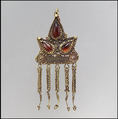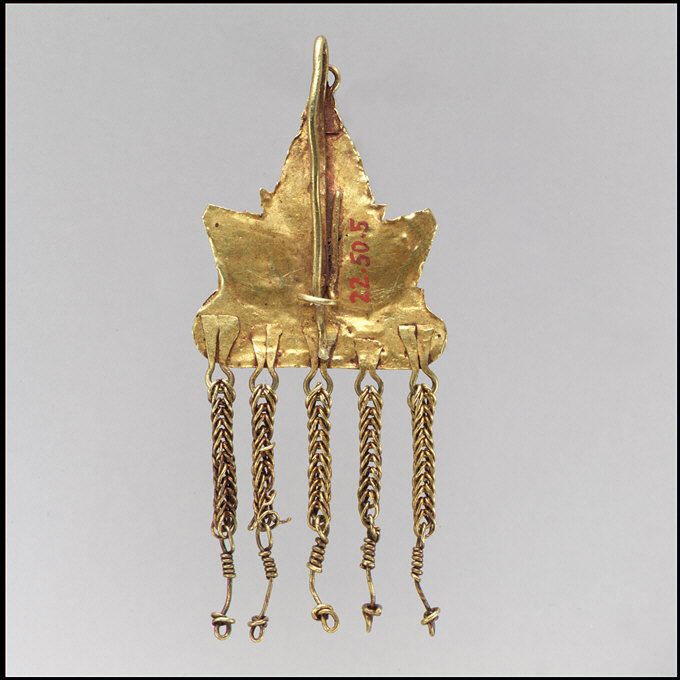Earring
Not on view
This earring, along with its pair (acc. no. 22.50.6), are said to be from the ancient city of Olbia on the northern coast of the Black Sea. Long a colonial trading post of the ancient Greeks, the city was inhabited by a mix of Greeks and Scythians and, from the third century B.C., Sarmatians as well. These earrings were made in the mid-first century A.D., a time when local inhabitants received gold and silver from the Romans in exchange for local goods such as salt and grain. The earrings display an array of accomplished goldsmithing techniques: three teardrop-shaped sardonyx stones in serrated, or dogtooth, settings are placed above a crossbar adorned with twisted filigree and granulation. The five chains of twisted gold wire hanging from the crossbar would have originally terminated in small glass beads. The Sarmatians, like the Scythians, buried their dead with jewelry and other possessions, and these earrings were likely part of a wealthy woman's burial attire. A grave recently excavated from the area suggests that a full complement of burial jewelry would have also included several necklaces, a pair of bracelets, gold brooches, and a string of beads for the head.
Due to rights restrictions, this image cannot be enlarged, viewed at full screen, or downloaded.
This artwork is meant to be viewed from right to left. Scroll left to view more.



